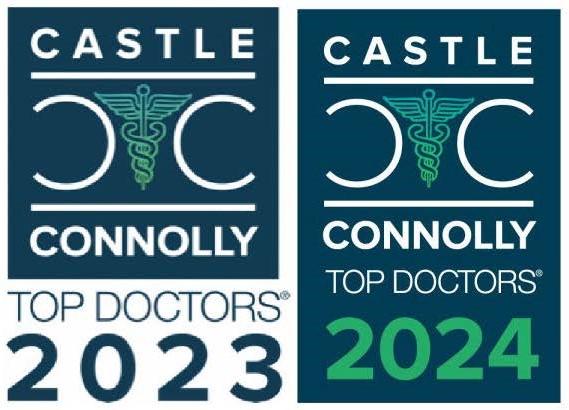
There are millions of people around the world who are struggling with tobacco addiction. Particularly in low-and middle-income countries where 80% of the world’s 1.3 billion smokers reside. But what starts as a seemingly harmless cigarette escalates quickly due to nicotine’s grip on your brain chemistry. Nicotine creates a relentless cycle of dependence, making quitting incredibly difficult.
China alone consumes a staggering 2 million tons of tobacco annually, highlighting the global reach of this addiction. Yet, amidst these statistics, there’s Transcranial Magnetic Stimulation (TMS). An innovative, non-invasive therapy disrupts the very foundation of addiction by modulating brain activity.
How Does Smoking Addiction Happen?
Many people are suffering from smoking addiction, also known as tobacco or nicotine addiction, around the world. In the U.S alone, there are over 28 million people who are currently a smoker. In fact, according to the National Institute on Drugs Abuse, in 2020, they recorded a total of 23 million people who are nicotine dependent. Indeed, smoking addiction is really a powerful condition that makes quitting smoking incredibly difficult due to the highly addictive nature of nicotine, a chemical found in tobacco.
To understand better, when someone smokes, the nicotine will be absorbed into the bloodstream and will reach the brain within seconds. There, it interacts with receptors, triggering the release of dopamine, a neurotransmitter associated with pleasure and reward. When that happens, it will create a feeling of satisfaction and relaxation. For people who are suffering from stress and anxiety, they will find relief, which then makes them continue to smoke.
With repeated smoking, the brain becomes familiar with the presence of nicotine. Over time, they will feel that they need higher doses to achieve the same pleasurable effects from nicotine, which we call tolerance. Meaning, smokers will seek more and more nicotine to experience the same pleasurable effects.
And if one day someone decides to quit smoking, it will be hard for them. They may experience what we call withdrawal symptoms. Withdrawal symptoms are what someone will experience when they are trying to stop or reduce the intake of any drug. They may experience irritability, anxiety, restlessness, difficulty concentrating, headaches, and fatigue, which will make it challenging for them to quit smoking.
Also, the negative effects of smoking addiction are far-reaching and can be extreme. Smoking is the leading cause of preventable death in the U.S, which contributes to numerous health problems:
- Cancer: Sadly, smoking is a major risk factor for cancers in the mouth, lung, throat, esophagus, bladder, and pancreas. As a matter of fact, people who survived cancer may have a higher chance of getting another type of cancer and even death.
- Heart Disease: Additionally, smoking may damage blood vessels and increase the risk of heart attack, stroke, and peripheral artery disease. For people who have existing heart diseases and still smoke, they may increase the risk of having more heart problems.
- Lung Disease: Furthermore,smoking may also cause chronic obstructive pulmonary disease (COPD), which includes emphysema and chronic bronchitis. These conditions make breathing difficult and may even worsen over time. Smokers are also at a significantly higher risk of death from COPD. With chances being 12 to 13 times greater compared to those who don’t smoke.
- Other Health Problems: Lastly, there’s a chance that smoking may weaken the immune system of the smoker. If they have poor immune systems, they are more susceptible to different types of infections. It can also contribute to diabetes, high blood pressure, eye disease, tuberculosis, and osteoporosis.
What’s more, smoking addiction may also hurt their loved ones or people around them. Secondhand smoke happens when a nonsmoker breathes in the smoke of a person who smokes. As a result, it can cause serious health issues, such as lung cancer and heart disease to non-smokers. Additionally, the financial burden of smoking is significant. With high costs for cigarettes and healthcare expenses related to smoking-related illnesses.
How Does TMS Disrupt the Cycle of Addiction?
Transcranial magnetic stimulation (TMS) uses brief magnetic pulses to stimulate specific brain areas. Depending on the treatment parameters, these pulses can either excite or inhibit neuronal activity. When it comes to addiction treatment, TMS typically targets the prefrontal cortex.
In essence, the prefrontal cortex region is needed for decision-making, impulse control, and emotional regulation. As a result, stimulating this area with TMS may help patients resist cravings, manage withdrawal symptoms, and improve their ability to make healthy choices.
TMS can disrupt the addiction cycle at several points:
- Reduced Cravings: Studies suggest that TMS can dampen activity in brain circuits associated with drug cravings. This may make it easier for patients to resist the urge to use and prevent relapse.
- Managing Withdrawal Symptoms: TMS may reduce withdrawal symptoms like anxiety, depression, and irritability, making the quitting process more tolerable.
- Enhanced Cognitive Control: TMS may improve a patient’s ability to control impulses and make rational decisions, ultimately reducing the risk of relapse by stimulating the prefrontal cortex.
The Science Behind TMS for Smoking Cessation
Several studies proved the effectiveness of the use of TMS in helping people reduce smoke addiction.
Examining Moderators of Response
There is one study entitled “Moderators of the Response to Deep TMS for Smoking Addiction” that discussed the factors influencing the effectiveness of Deep TMS treatment. Accordingly, the researchers identified the characteristics of participants with potential higher quit rates by analyzing the data gathered from a randomized controlled trial.Young participants who are 40 years old or younger showed a four times increase in quitting rates than older participants.
Moreover, it was found that quitters are more likely to quit if they have a shorter smoking history. A 10 fewer years on average, than those who continued smoking for longer time. Hence, the study also showed educational opportunities.
It was found that those participants with more than 12 years of education achieved a seven-fold higher quit rate. Aside from that race also appeared to be an important part. Surprisingly, Caucasian participants demonstrated double the success rate compared to their African-American counterparts.
Based on these findings. It suggests that Deep TMS may be particularly beneficial for younger individuals with shorter smoking histories and higher educational attainment. It is worth mentioning that further investigation is needed to understand the reasons for these disparities and optimize treatment protocols for those with a lower likelihood of success based on these initial observations.
Craving Reduction and Substance Consumption
A systematic review and meta-analysis by Zhang et al., published in 2019, aimed to comprehensively assess the impact of repetitive TMS (rTMS) on craving and substance use across various addictions. As part of the study, the researchers analyzed 26 randomized controlled trials and found a significant effect. They have found that excitatory rTMS applied to the left dorsolateral prefrontal cortex (DLPFC) effectively reduced cravings in patients with nicotine, alcohol, and illicit drug dependence.
Furthermore, they also found a relationship between the number of stimulation pulses and the reduction in cravings, suggesting a dose-dependent effect. This specific rTMS protocol, targeting the left DLPFC with excitatory stimulation, interestingly stood out as the most effective in reducing cravings compared to sham stimulation.
Aside from craving reduction, the meta-analysis also acknowledged encouraging results regarding substance consumption. Excitatory rTMS of the left DLPFC and deep TMS (dTMS) targeting both DLPFC and insula bilaterally demonstrated a significant decrease in substance consumption compared to sham stimulation. These findings suggest that TMS may not only curb the desire to use addictive substances but also lead to a reduction in actual consumption.
Optimizing Treatment for Smokers
Another major study on TMS and smoke addiction titled “Smoking Cessation Induced by Deep Repetitive Transcranial Magnetic Stimulation of the Prefrontal and Insular Cortices: A Prospective, Randomized Controlled Trial” focused on the application of TMS for smoking cessation.
In their study, the researcher’s randomized controlled trial included participants who smoked heavily. They are the people who smoke at least 20 cigarettes daily and had previously failed to quit with traditional methods. They compared the effectiveness of high-frequency, low-frequency, and sham TMS administered to the lateral PFC and insula bilaterally.
The researchers revealed a significant reduction in cigarette consumption and nicotine dependence only with high-frequency deep TMS. Moreover,combining this treatment with exposure to smoking cues also improved the reduction in cigarette consumption. Making a remarkable 44% abstinence rate at the end of treatment and an estimated 33% abstinence rate six months later.
The studies presented above proved that TMS holds the potential for smoking cessation. TMS offer a safe, non-invasive, and potentially life-saving tool for individuals having a hard time quitting.
Who is a Candidate for TMS for Smoking Cessation?
Transcranial Magnetic Stimulation (TMS) can be a potential option for smokers seeking cessation. Yet it may not be for everyone. There are several factors that are important in determining the suitability of TMS for an individual.
- Current Smoking Status: TMS may work better for individuals if they are actively trying to quit smoking and committed to the cessation process. They should be motivated and ready to take the treatment.
- Past Medical History: Certain medical conditions may find TMS unsuitable. Therefore, a thorough medical history evaluation is essential.
- Consultation with a Doctor: Lastly, a specialized doctor is needed when deciding whether TMS is right for an individual. Professionals can expertly assess the individual’s specific situation. They can determine if TMS is a suitable option for the patient.
What to Expect During TMS Treatment:
- Treatment Sessions: TMS treatment involves a series of sessions, usually conducted over several weeks. Each session lasts around 30 to 60 minutes on average. A magnetic coil is placed on the patient’s head during these sessions. Delivering targeted magnetic pulses to stimulate specific brain regions involved in addiction and cravings.
- Minimal Discomfort: Most of the time, TMS is generally well-tolerated. People experience only mild discomfort, such as tapping or tingling sensations on the scalp. Some reported slight discomfort initially. But this usually diminishes as the sessions continue.
- Combined Therapy: TMS is often used in conjunction with other smoking cessation strategies. These might include behavioral therapy, which helps address the psychological aspects of addiction, and medication, which can alleviate withdrawal symptoms and reduce cravings.
- Ongoing Commitment: Success with TMS is an ongoing commitment. Regular attendance at treatment sessions and adherence to a comprehensive cessation plan are all important for achieving the best outcomes.
Getting Started with TMS at the Insomnia and Sleep Institute
The TMS Institute of Arizona understands the challenges of quitting smoking. They are ready to support you every step of the way. They are an expert medical team that specializes in Transcranial Magnetic Stimulation (TMS) and other advanced therapies designed to help individuals break free from addiction.
When you choose their institute, you’re not just receiving treatment but joining a compassionate community dedicated to your well-being. They will work closely with you to determine the most effective approach for your unique needs. Their goal is to provide personalized care that empowers you on your journey to a smoke-free life.
If you’re serious and ready about quitting smoking, you can contact the TMS Institute of Arizona. Call at 480-448-2916 or fill out the contact form and schedule a consultation. They will listen, care for you, and guide you towards a brighter, tobacco-free tomorrow.
References
What is the scope of tobacco, nicotine, and e-cigarette use in the United States? | National Institute on Drug Abuse. (2023, December 14). National Institute on Drug Abuse. https://nida.nih.gov/publications/research-reports/tobacco-nicotine-e-cigarettes/what-scope-tobacco-use-its-cost-to-society
Centers for Disease Control and Prevention. (n.d.). https://www.cdc.gov/tobacco/sgr/50th-anniversary/pdfs/wynk-cancer.pdf
How Smoking Affects the Heart and Blood Vessels. (2022, March 24). NHLBI, NIH. https://www.nhlbi.nih.gov/health/heart/smoking
Gersner, R., Noam Barnea-Ygael, & Tendler, A. (2023). Moderators of the response to deep TMS for smoking addiction. Frontiers in Psychiatry, 13. https://doi.org/10.3389/fpsyt.2022.1079138
Jack J.Q. Zhang, Kenneth N.K. Fong, Rang ge Ouyang, Andrew M.H. Siu, & Kranz, G. S. (2019). Effects of repetitive transcranial magnetic stimulation (rTMS) on craving and substance consumption in patients with substance dependence: a systematic review and meta‐analysis. Addiction, 114(12), 2137–2149. https://doi.org/10.1111/add.14753
Limor Dinur-Klein, Pinhas Dannon, Hadar, A., Rosenberg, O., Roth, Y., Kotler, M., & Zangen, A. (2014). Smoking Cessation Induced by Deep Repetitive Transcranial Magnetic Stimulation of the Prefrontal and Insular Cortices: A Prospective, Randomized Controlled Trial. Biological Psychiatry, 76(9), 742–749. https://doi.org/10.1016/j.biopsych.2014.05.020
World Health Organization. (2023, July 31). Who.int; World Health Organization: WHO. https://www.who.int/news-room/fact-sheets/detail/tobacco












